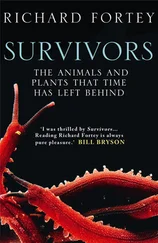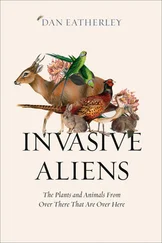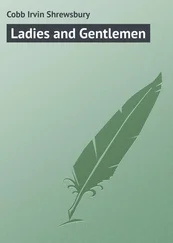Andrew H. Cobb - Herbicides and Plant Physiology
Здесь есть возможность читать онлайн «Andrew H. Cobb - Herbicides and Plant Physiology» — ознакомительный отрывок электронной книги совершенно бесплатно, а после прочтения отрывка купить полную версию. В некоторых случаях можно слушать аудио, скачать через торрент в формате fb2 и присутствует краткое содержание. Жанр: unrecognised, на английском языке. Описание произведения, (предисловие) а так же отзывы посетителей доступны на портале библиотеки ЛибКат.
- Название:Herbicides and Plant Physiology
- Автор:
- Жанр:
- Год:неизвестен
- ISBN:нет данных
- Рейтинг книги:5 / 5. Голосов: 1
-
Избранное:Добавить в избранное
- Отзывы:
-
Ваша оценка:
- 100
- 1
- 2
- 3
- 4
- 5
Herbicides and Plant Physiology: краткое содержание, описание и аннотация
Предлагаем к чтению аннотацию, описание, краткое содержание или предисловие (зависит от того, что написал сам автор книги «Herbicides and Plant Physiology»). Если вы не нашли необходимую информацию о книге — напишите в комментариях, мы постараемся отыскать её.
Discover the latest developments in herbicide and weed biology Herbicides and Plant Physiology,
Arabidopsis
Herbicides and Plant Physiology
Herbicides and Plant Physiology — читать онлайн ознакомительный отрывок
Ниже представлен текст книги, разбитый по страницам. Система сохранения места последней прочитанной страницы, позволяет с удобством читать онлайн бесплатно книгу «Herbicides and Plant Physiology», без необходимости каждый раз заново искать на чём Вы остановились. Поставьте закладку, и сможете в любой момент перейти на страницу, на которой закончили чтение.
Интервал:
Закладка:
Volunteer cereals can also carry foliage diseases from one season to the next and to adjacent crops, examples being yellow rust ( Puccinia striiformis) , brown rust ( Puccinia hordei ) and powdery mildew ( Erysiphe graminis ). These cereals may become highly competitive weeds and can smother and kill young oilseed rape seedlings, for example. Even if the seedlings survive, growth is predictably stunted and winter kill more likely. Volunteer oilseed rape plants may also create an additional problem of oil purity. Since modern varieties are grown for low erucic acid and glucosinolate content, the presence of volunteer plants could severely contaminate the crop with unacceptably high levels of these compounds, which could cause the crop to be rejected.
Weed (sugar) beet has also become a serious problem in Europe, such that at least 45% of the UK crop is infested. These bolters also severely reduce crop yield.
In all cases harvesting techniques must be improved to avoid substantial seed return to the soil, and agronomic practices should be altered to reduce rapid germination of volunteers. It is also important that volunteers containing engineered resistance to herbicides are avoided at all costs. These plants would be difficult to control by chemical means, and could have serious consequences to the spread of herbicide‐resistant genes in the population at large (Young, 1989).
The water hyacinth ( Eichornia crassipes Mart. Solms) has been blamed for the loss of 10% of the water in the river Nile, equivalent to 7 × 10 9m 3annually, through increased transpiration, and this loss is in addition to its deleterious effects on irrigation systems, fishing activity, navigation and health (by harbouring vectors of human disease organisms) which, together with its pan‐tropical spread, have earned it the name ‘the million dollar weed’ (Lacey, 1985).
1.7 Positive attributes of weeds
Although this section will outline the positive roles of weeds in agroecosystems, it might more properly be titled ‘Positive Attributes of Non‐sown Plant Species’, to reflect the definition of a weed given at the beginning of this chapter.
Non‐sown species of plant, whether native to a piece of land or accidentally introduced, can perform a number of very important roles. These need to be assessed prior to the implementation of any weed management practices as removal might cause more harm than good. Non‐sown species have a valuable role in reducing soil erosion by water and wind. This is particularly important when a crop is small and after harvest, when erosion is likely to be more of a problem. An additional benefit is that plants growing in this situation will ‘lift’ and make available nutrients by absorbing them at depth through their roots and assimilating them into above‐ground biomass. When the above‐ground biomass dies, then nutrients are returned to the soil surface. If the non‐sown species is a legume, then the added benefits of nitrogen fixation can be considered. In this way non‐sown species are not only reducing erosion but also reducing nutrient leaching.
Although non‐sown species may act as reservoirs and alternative hosts for pests and diseases, they can also act as shelter for beneficial organisms that can contribute to biological control in crops. This shelter may be in the form of hedgerows or artificially created beetle banks, but the role of non‐sown species must not be underestimated. In addition, complete removal of all non‐crop species gives herbivorous organisms no choice but to eat the crop. Recent research has investigated whether organisms such as slugs might preferentially predate on non‐crop species if they are present (Brooks et al ., 2003).
Non‐sown species also contribute a major food source for birds and insects ( Table 1.11), and therefore aid in the support of a biodiverse environment. This positive role must be considered alongside the negative effects of some species. Wild oat and black‐grass have a negligible positive effect on biodiversity, while causing high yield losses. In such cases it is likely that the weeds will be controlled. In other cases, where a positive role on biodiversity is identified, removal will depend to an extent on the numbers present and financial implications. Even where a positive role has not been identified then certain species, such as corncockle and darnel, have now become very rare and conservation measures should be adopted where they are found to reduce further decline. With an ever‐growing focus on farming in an environmentally sensitive way, it is likely that there will become a greater emphasis on justifying why a non‐crop species should be removed rather than justifying why they should remain.
Table 1.11 Ranking of the competitive effects of selected weed species and their value for birds and invertebrates.
Source: Lutman, P.J., Boatman, N.D, Brown V.K. and Marshall, E.J.P. (2003) Weeds: their impact and value in arable ecosystems. In: The Proceedings of the BCPC International Congress: Crop Science and Technology 2003 1, 219–226.
| Species | Competitive index | Value for birds | Value for insects |
|---|---|---|---|
| Alopecurus myosuroides | *** | — | |
| Avena fatua | **** | — | — |
| Lolium multiflorum | **** | ||
| Poa annua | ** | ** | *** |
| Aethusa cynapium | ** | — | |
| Anagallis arvensis | * | — | |
| Aphanes arvensis | * | ||
| Brassica napus | *** | ** | — |
| Chenopodium album | ** | *** | *** |
| Cirsium spp. | *** | * | *** |
| Convolvulus arvensis | *** | ||
| Epilobium spp. | ** | ||
| Fallopia convolvulus | * | *** | |
| Fumaria officinalis | ** | * | — |
| Galium aparine | **** | — | *** |
| Geranium spp. | ** | — | |
| Lamium purpureum | ** | — | ** |
| Legousia hybrida | * | ||
| Myosotis arvensis | ** | — | — |
| Papaver spp. | *** | * | |
| Persicaria maculosa | ** | *** | ** |
| Polygonum aviculare | ** | *** | *** |
| Ranunculus spp. | ** | ||
| Senecio vulgaris | ** | ** | *** |
| Sinapis arvensis | *** | ** | *** |
| Sonchus spp. | ** | * | *** |
| Stellaria media | ** | *** | *** |
| Tripleurospermum inodorum | *** | *** | |
| Veronica spp. | ** | — | |
| Viola arvensis | * | ** | — |
The number of asterisks refers to the species’ increased importance to birds/invertebrates or increasing competitive impact; ‘—’, no importance; blank, no information).
Allelopathy, as mentioned in Section 1.4.1, is usually used to describe the negative effect of one plant on another via the release of natural growth inhibitors. However, incidences of positive allelopathy have been reported, where allelopathic chemicals produced by one species have a positive effect on another species. An example is corncockle (now a rare arable plant) that grows alongside wheat. Corncockle produces agrostemmin which increases the yield and the gluten content of the wheat (Gajic and Nikocevic, 1973).
Читать дальшеИнтервал:
Закладка:
Похожие книги на «Herbicides and Plant Physiology»
Представляем Вашему вниманию похожие книги на «Herbicides and Plant Physiology» списком для выбора. Мы отобрали схожую по названию и смыслу литературу в надежде предоставить читателям больше вариантов отыскать новые, интересные, ещё непрочитанные произведения.
Обсуждение, отзывы о книге «Herbicides and Plant Physiology» и просто собственные мнения читателей. Оставьте ваши комментарии, напишите, что Вы думаете о произведении, его смысле или главных героях. Укажите что конкретно понравилось, а что нет, и почему Вы так считаете.











